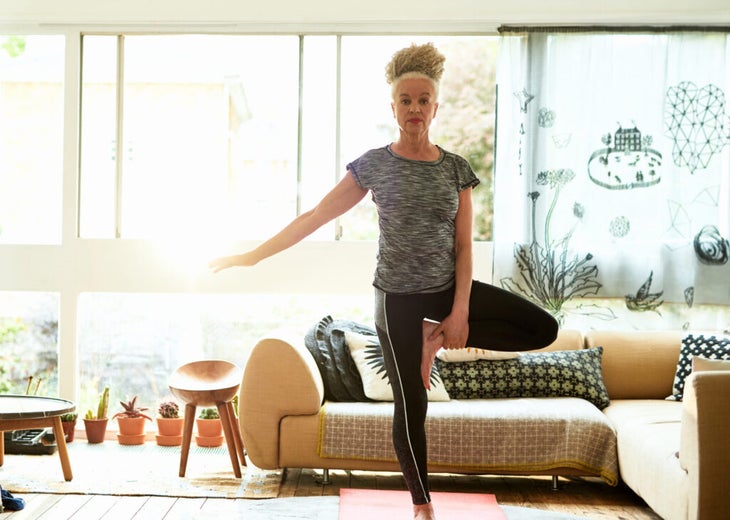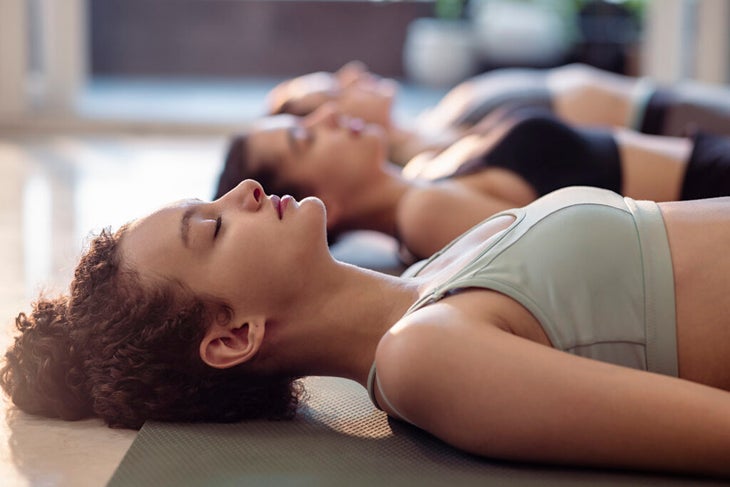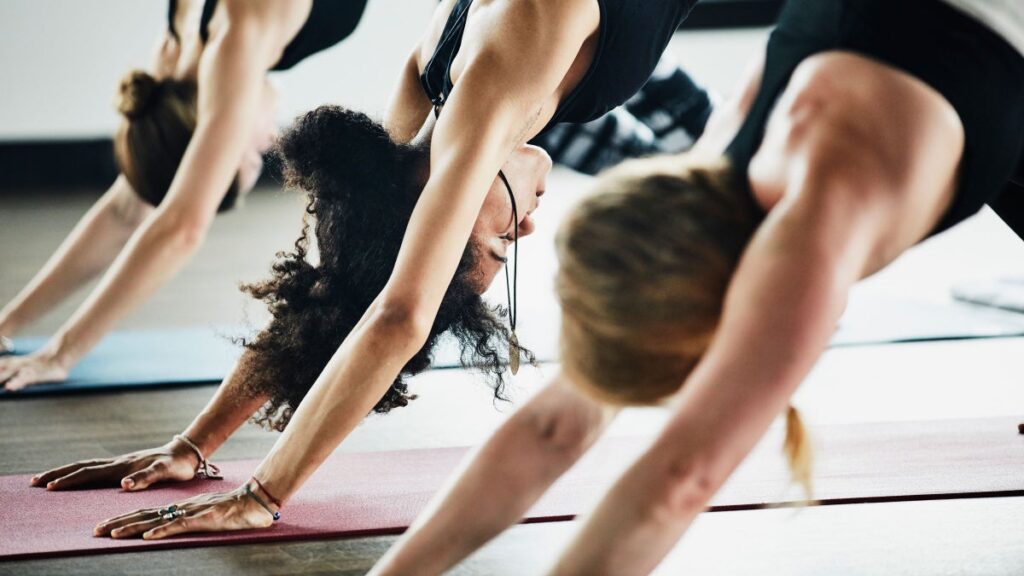Get full access to Outside Learn, our online education hub featuring in-depth yoga, fitness, & nutrition courses, when you <a href="https://www.yogajournal.com/outsideplus" class="o-content-cta-link" data-analytics-event="click" data-analytics-data="{"name":"Element Clicked","props":{"destination_url":"/outsideplus","domain":"<>","name":"in-content-cta","type":"link"}}”>sign up for Outside+.
When I practice yoga, I try my best to be attentive, mindful, and at ease. However, more often than not, I get sidetracked: My brain veers to my schedule for the rest of the day, or a conversation I had that I’m not happy about, or an e-mail I forgot to answer. Before I know it, I’m doing a pose half-heartedly and not truly benefiting from the physical practice or fully engaging in the precious time I’ve set aside to connect with myself.
That’s where the talent of the best yoga teachers comes into play. It’s as if they know that the tiniest shift or adjustment in our alignment can both bring you back to the present moment and into a stronger, yet at the same time more easeful, yoga practice.
Whether you’re looking for on-point cues for your own practice or for your teaching, the following are the most helpful cues a yoga teacher has ever given me.
See also The 10 Most Life-Changing Things Yoga Teachers Have Ever Said to Me
1. Come onto your fingertips in Child’s Pose
Child’s Pose can be a beautiful resting pose, one that I often come back to when the practice becomes difficult or if I simply need a break. But sometimes it can be helpful to hear a reminder that Child’s Pose can be active with only a minor adjustment. When a yoga teacher told me to stretch my arms out longer on my mat and “activate” my fingers by coming onto my fingertips, I was able to achieve a deeper opening in my shoulders and upper back. It felt divine and reminded me that rest is meaningful and important but at times it should be intentional and not just a time to zone out and let my mind wander.
What a nice reminder that the rest I take outside the yoga studio should be intentional, too. These days, rather than simply vegging out on the couch playing on my phone, I find myself doing more rejuvenating things, like reading, sleeping, playing guitar, or meditating.
See also Do Less With More Awareness: Child’s Pose
2. Keep your knee deeply bent during Humble Warrior and Reverse Warrior
Sometimes, I find myself going through the motions during class, and when that happens, it can be tempting to just flow through the postures without a keen awareness of alignment cues. This happens a lot for me when moving from Warrior I into Humble Warrior or from Warrior II to Reverse Warrior. Then, a yoga teacher pointed out that many of us weren’t keeping our knees bent toward a 90-degree angle in these postures, and instead, we were moving around without staying true to the integrity of these poses. It was a small, but powerful reminder that even when you start to flow, it’s incredibly important to stay focused.
See also: Can’t Focus? Try This 15-Minute Mindfulness Practice

3. Spread your arms and let yourself sway during Tree Pose
I used to think Tree Pose was a time when I should stand as rigidly as possible and try to look like in control. But when one of my yoga teachers mentioned that tree pose is really about channeling a tree, suddenly the pose felt entirely different. Think about it this way: Trees are so strong because they are imperfect, and they let their branches go this way and that so that they can move with the wind. Once I raised my arms up and let them sway, I felt so much more powerful and alive in the pose.
See also 3 Ways to Safely Modify Tree Pose
4. Smile during Happy Baby
This cue might seem silly, but it’s one of the most transformative cues I’ve ever heard. Happy Baby is an inherently goofy-feeling pose. (I dare you not to feel a little silly with your legs splayed, rolling around on your mat like an infant.) Yet in this so-serious world, it can be tempting to forget that it’s okay to be lighthearted—especially when practicing poses that are intended to be such. When a teacher told me to smile, I couldn’t help but feel happiness throughout my body and it made the pose so much better.
See also A Yoga Sequence for Deep Hip Opening
5. Grip the mat with your fingers during Handstand
For the longest time, I struggled with Handstand (and still do!), but when I took a class devoted to inversions, I learned something I had never really known: My fingers have a lot of power when it comes to gripping the floor. Learning to find support and strength in the muscles in my fingers while I use my core and feet to kick up into Handstand feels like a revelation. After all, my fingers are one part of my body I never thought about in terms of strength. Now, when I use them to grip the floor, they help carry me into a pose I’d always wanted to get into.
See also Kino MacGregor’s 4-Step Get-Your-Handstand Plan
6. You can do anything for 10 seconds
I heard this cue when holding Warrior III, and not only did it help me quiet the mental chatter that threatened to lure me out of that pose way sooner than I needed to, but it’s helped me when I practice many other challenging poses since then. Some days, I feel off-balance and discouraged. But when I remember that I can do anything for 10 seconds, or at least give it my best shot, I find I can usually stay longer.
More often than not, it turns out that what was preventing me from getting into or holding a posture was never physical and was always in my head. I try to apply this as often as possible in as many situations as possible, and usually, whatever I’m aiming to do is much easier to accomplish than I’ve built it up to be in my head.

7. Relax your facial muscles in Savasana
Sometimes when I lie down in Savasana (Corpse Pose), I immediately start thinking about what I’m going to do the moment I walk out of the studio. What’s the next task on my to-do list? How soon can I hit the shower and get to the grocery store?
When a yoga teacher gently reminds the class to relax their facial muscles when we settle into Savasana, I become aware that I’m unknowingly clenching my jaw or crinkling my forehead or otherwise tightening my face in worry. Forcing me to pay attention to this also causes my mind to relax and helps me derive the maximum benefit of this essential pose.
See also: The Subtle Struggle of Savasana
This article has been updated. Originally published July 10, 2018.





